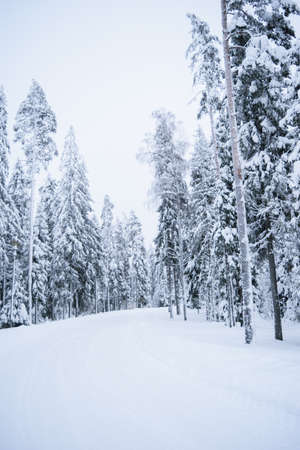Understanding U.S. Winter Hiking Environments
When it comes to winter hiking in the United States, understanding the diverse range of climates and terrain is essential for safety and success. From the snow-draped peaks of the Rockies to the frosty woods of the Appalachians, each region presents unique challenges that impact trail conditions and gear choices. The American landscape offers everything from dry, powdery snow in Colorados high country to icy, rain-slick trails in the Pacific Northwest and blustery, wind-chilled paths across New England. Knowing what to expect—and how these environments differ—lays the foundation for smart preparation and layering.
| Region | Typical Winter Conditions | Key Considerations |
|---|---|---|
| Rocky Mountains (Colorado, Montana) | Heavy snowfall, deep powder, subzero temps | Deep insulation, avalanche awareness, traction devices |
| Sierra Nevada (California) | Wet snow, fluctuating temps, risk of storms | Waterproof layers, flexible insulation, weather monitoring |
| Pacific Northwest (Washington, Oregon) | Rain, freezing rain, icy trails | Water-resistant boots, microspikes, quick-dry clothing |
| Appalachians (Northeast & Southeast) | Mild snow, frequent ice patches, cold wind | Windproof outerwear, traction aids, layer adaptability |
This regional breakdown is a starting point for planning your winter hike. Always check local trail reports and forecasts before heading out. Smart hikers know that U.S. winter trails can shift rapidly in both weather and condition—being prepared means understanding not just where you’re going but what winter might throw your way.
2. Essential Layering: Gear Up for the Cold
When it comes to tackling America’s diverse winter trails, effective layering is a must for warmth, moisture management, and protection from the elements. The key is to build a system using three core layers—each with a specific function—and to select materials and brands that are favorites among U.S. hikers.
The Three-Layer System Explained
| Layer | Purpose | Recommended Materials | Popular U.S. Brands |
|---|---|---|---|
| Base Layer | Wicks sweat away from your skin to keep you dry | Merino wool, synthetic fabrics (like polyester blends) | Smartwool, Patagonia Capilene, REI Co-op |
| Mid Layer | Insulates and retains body heat | Fleece, down, synthetic insulation (Primaloft) | The North Face, Arc’teryx, Mountain Hardwear |
| Outer Layer (Shell) | Shields from wind, rain, and snow | Waterproof/breathable fabrics (GORE-TEX, eVent) | Columbia, Outdoor Research, Marmot |
Choosing the Right Materials for American Winter Trails
U.S. hikers often face rapidly changing conditions—from Pacific Northwest rain to Rockies snowfall—so choosing breathable and quick-drying materials is crucial. Merino wool is prized for its odor resistance and warmth even when wet. Synthetics like polyester excel at drying fast and are often more budget-friendly. For outer shells, GORE-TEX remains a gold standard for waterproofing without sacrificing breathability.
Pro Tips from U.S. Hikers:
- Avoid cotton: It holds moisture and can lead to dangerous heat loss.
- Layer for activity: Adjust your system by removing or adding layers as you hike uphill or stop for breaks.
- Select fit wisely: Base layers should be snug; mid-layers comfortably loose; shells roomy enough for all layers underneath.
- Pocket placement: Choose jackets with pockets accessible while wearing a backpack or harness—a feature loved by American hikers.
With these fundamentals and U.S.-trusted brands in mind, you’ll be ready to embrace winter hikes across the country with confidence and comfort.
![]()
3. Must-Have Winter Hiking Accessories
When it comes to winter hiking in the U.S., having the right accessories can make the difference between an enjoyable trek and a potentially dangerous outing. American hikers know that no matter how stellar your layering system is, cold-weather gear essentials are non-negotiable. Here’s a breakdown of vital accessories you shouldn’t hit the trail without:
Essential Cold-Weather Gear
| Accessory | Purpose | Recommended Picks (U.S. Brands) |
|---|---|---|
| Insulated Gloves | Keep hands warm and dry; prevent frostbite. | Outdoor Research Alti Gloves, Black Diamond Guide Gloves |
| Beanies & Balaclavas | Retain body heat by covering your head and neck. | Patagonia Brodeo Beanie, Smartwool Merino 250 Balaclava |
| Gaiters | Shield boots and lower legs from snow and debris. | Outdoor Research Crocodile Gaiters, REI Co-op Flash Gaiters |
| Traction Devices | Add grip on icy or packed snow trails for safety. | Kahtoola MICROspikes, Yaktrax ICEtrekkers Diamond Grip |
Why These Accessories Matter for U.S. Hikers
The American backcountry is as diverse as it is unpredictable—think Colorado Rockies whiteouts or icy trails in New Hampshire’s White Mountains. Reliable gloves protect your fingers from biting winds, while a beanie or balaclava helps retain crucial body heat. Gaiters are especially popular among U.S. hikers tackling deep snow in places like the Pacific Northwest, keeping socks dry and feet comfortable. Traction devices such as MICROspikes or crampons are must-haves for East Coast trails known for black ice or the slippery granite paths of Yosemite in winter.
Pro Tip: Always Stash Extras!
Experienced U.S. hikers often pack an extra set of gloves and socks—moisture and unexpected weather can turn quickly. Look for gear designed specifically for American climates and trail conditions, ensuring both comfort and safety during your winter wanderlust adventures.
4. Winter Survival Skills Every Hiker Needs
When winter hiking in the U.S., survival skills become more than just useful—they’re essential. The challenges of snow-covered trails, unpredictable weather, and remote locations mean every hiker should be prepared for the unexpected. Here are some crucial winter survival tactics to keep you safe and sound in the backcountry.
Navigation in Snow
Whiteouts and snow-blanketed trails can disorient even seasoned hikers. Always carry a map, compass, and GPS device (like a Garmin or smartphone with offline maps). Learn how to use these tools before your trip. Snow often obscures trail markers, so practice identifying landmarks and read up on terrain navigation. Remember: batteries die faster in the cold, so store electronics close to your body for warmth.
Avalanche Awareness
If you plan to hike in mountainous regions like Colorado, Utah, or the Pacific Northwest, avalanche knowledge is critical. Check local avalanche forecasts at sites like Avalanche.org before you go. Carry an avalanche beacon, probe, and shovel—and know how to use them. Consider taking an avalanche safety course; it could save your life.
Avalanche Safety Gear Table
| Essential Item | Description |
|---|---|
| Avalanche Beacon | Transmits location if buried under snow; must be worn on your body |
| Probe | Collapsible pole used to locate someone under snow |
| Shovel | Lightweight, durable shovel for digging through heavy snow quickly |
Starting a Fire in Harsh Conditions
Fire provides warmth, melts snow for water, and boosts morale. In winter, dry tinder is scarce and matches may not light. Pack waterproof matches, a reliable lighter, and fire starters (cotton balls soaked in petroleum jelly work great). Practice building fires with gloves on—dexterity is limited when it’s freezing! Always clear snow down to earth before starting your fire.
Hypothermia Prevention
Hypothermia can set in quickly even above freezing temperatures if you’re wet and exposed to wind. Dress in layers that wick moisture away from your skin; avoid cotton as it retains moisture. Take regular breaks to eat high-calorie snacks and hydrate—even if you don’t feel thirsty. If anyone starts shivering uncontrollably or seems confused, act fast: get them dry, insulated, and sheltered immediately.
Quick Hypothermia Warning Signs Table
| Early Signs | Advanced Signs |
|---|---|
| Shivering Numbness Fatigue |
Slurred speech Loss of coordination Confusion/apathy |
Mastering these winter survival skills helps ensure every cold-weather adventure remains memorable for all the right reasons. Whether trekking through Vermont’s Green Mountains or exploring California’s Sierra Nevada, preparation is the key to enjoying winter wonderlands safely.
5. Food, Hydration, and Nutrition Tips for Cold-Weather Hikes
When winter hiking in the U.S., staying fueled and hydrated is just as critical as dressing in layers. Subfreezing temperatures can zap your energy, decrease appetite, and make water management tricky. Here’s how to ensure you’re prepared with the right nutrition and hydration strategies for American winter trails.
High-Energy Snacks & Meals
Packing calorie-dense foods is essential to keep your body warm and energized. Opt for snacks that won’t freeze easily and are easy to eat on the go, even with gloves on. Here are some popular options:
| Snack/Meal | Benefits |
|---|---|
| Trail mix (nuts, dried fruit, chocolate) | High calories, healthy fats, quick energy |
| Energy bars (look for high-fat/protein types) | Convenient, compact, slow-burning fuel |
| Jerky (beef, turkey, vegan options) | Protein-rich, long shelf life |
| Cheese & crackers | Satisfying carbs and fat combo |
| Peanut butter packets | Easy to eat, high-calorie content |
Keeping Water from Freezing
Hydration bladders and bottles are prone to freezing in cold temps. Use these tips to keep your water accessible:
- Insulate water bottles by placing them in wool socks or using bottle insulators.
- Carry bottles upside down; ice forms at the top first so the opening stays clear.
- If using a hydration bladder, blow air back into the tube after sipping to prevent freezing.
- Add a splash of electrolyte powder or sports drink mix—sugars lower the freezing point slightly.
Clever Tip:
Chemical hand warmers tucked next to your water bottle can help keep it from icing over during especially frigid hikes.
Maintaining Energy Levels on the Trail
Your body burns more calories in winter just staying warm. Plan on eating small amounts frequently—think “snack often” rather than “stop for big meals.” Here’s a quick breakdown of fueling strategy:
| Time/Condition | Recommended Fuel |
|---|---|
| Before starting out | A hearty breakfast rich in complex carbs and protein (oatmeal with nuts and fruit) |
| On the trail (every 60–90 minutes) | A handful of trail mix or an energy bar |
| During breaks | Sips of hot soup or broth from a thermos for warmth and electrolytes |
Stay Hydrated!
You may not feel as thirsty in cold weather but dehydration is still a risk. Aim for at least half a liter of water per hour of strenuous activity—more if you’re sweating heavily under those layers.
6. Safety in Numbers: Hiking Etiquette and Emergency Preparedness
Winter hiking across the U.S. isn’t just about layering up—it’s also about staying safe and looking out for one another. Whether you’re trekking through the Rockies or exploring Appalachian trails, group hiking is a proven strategy for safety during the colder months. Knowing trail etiquette, effective communication, and how to respond in emergencies can make all the difference.
Group Hiking Norms
Sticking together is more than just friendly—it’s essential for winter survival. Groups should establish a pace that suits everyone and regularly check in at designated points. Always appoint a leader and a sweep (someone who stays at the end of the group) to ensure no one is left behind.
Trail Communication
Clear communication prevents mishaps on snowy or icy terrain. Before heading out, agree on basic signals—like whistles or hand gestures—to use if someone needs help or the group needs to stop. Here’s a quick reference table:
| Signal | Meaning |
|---|---|
| One Whistle Blast | Stop / Attention |
| Two Whistle Blasts | Gather Here |
| Three Whistle Blasts | Emergency / Need Help |
Essential Safety Gear Checklist
| Item | Purpose |
|---|---|
| Map & Compass/GPS | Navigating snowy trails when visibility drops |
| Headlamp with Extra Batteries | Short daylight hours in winter hikes |
| Insulated Emergency Blanket | Prevent hypothermia if stranded |
| First Aid Kit (incl. blister care) | Treat injuries immediately |
| Whistle/Signaling Device | Easier for rescuers to find you |
Connecting with U.S. Search and Rescue Services
If you encounter an emergency, it’s vital to know how to reach local search and rescue teams. Most U.S. wilderness areas are covered by county-level SAR units, often reachable via 911 even without cell service—many phones will connect to any available network for emergency calls. Consider registering your trip with local ranger stations or using apps like Garmin inReach or SPOT devices, which can send your GPS location directly to responders.
By understanding group dynamics, trail communication, and emergency protocols specific to the American outdoors, winter hikers can confidently explore while minimizing risks—even when conditions turn harsh.


